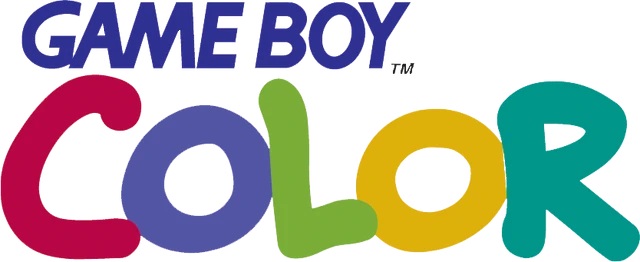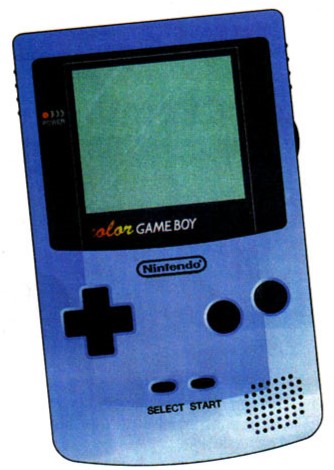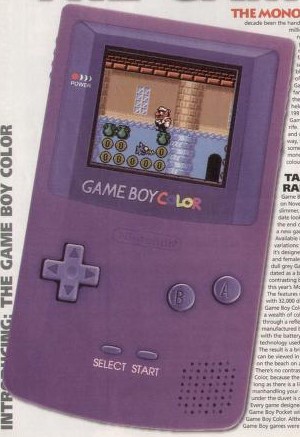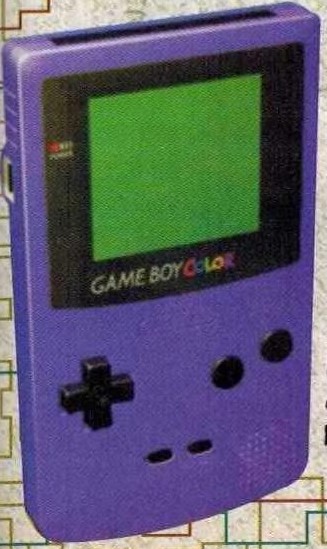NES On Wheels
Long-time Chief Engineer Gunpei Yokoi met with then-Nintendo CEO Hiroshi Yamauchi to discuss a potential handheld NES product.
Originally codenamed "Dot Matrix Game" and surviving into the final product's model number (referring to it's display technology),
the Game Boy combined the LCD technology of their earlier line of Game & Watch games with the cartridge mechanic of the NES. Member
of Nintendo R&D1 Satoru Okada joined Yokoi to develop the handheld, and they had some disagreements. Yokoi decided the new handheld
should be small, light, affordable, and durable. He also believed that it needed a recognizable software library. Shigesato Itoi,
eventual designer of EarthBound, proposed the name "Game Boy", but was almost unanimously hated and derided "DameGame" (dah-may),
meaning "hopeless".
The Right Direction
In 1987, the Game Boy was unveiled at trade shows (prototype shot yet to be found). It used an 8-way D-Pad, as joysticks cause
portability issues and as with the NES, were liable to being stepped on or otherwise broken easily. Yokoi felt the controls needed
to remain level with the case's design. After Nintendo of America marketing manager Don Coyner got a demonstration by their
then-president Minoru Arakawa, Coyner was pleased by the "good enough" graphics, $90 price point, and comfortable size. He
especially noted the thrill of gameplay that kept you playing more and more, along with head-to-head play. Hiroshi Yamauchi
concluded boldly at the time the Game Boy may sell over 25,000,000 units in the first three years!
It was released on April 21st, 1989. Within two weeks, 300,000 units were sold in Japan. It was especially popular due to the
pack-in game Tetris, which became its "killer app". Three months later on July 31st, it was released in the US, selling 40,000
units that day alone! And although this system was selling bucketloads, that didn't stop competition. Atari released their Lynx in
September, featuring the first backlit color screen in a handheld. In 1990, Sega came out with their Game Gear, which also used a
color backlit screen. These two would fail in the next few years because of lackluster games and battery life, among other
respective issues, while the Game Boy lived on. Eventually, in 1996, a lighter, smaller version called the Game Boy Pocket was
released.


Game Boy Chroma
In 1996, Nintendo introduced their Game Boy Pocket. It was slimmed down, lighter, and used slightly more advanced LCD
technology than its older brother. But also that year, they introduced the globally-successful Pokemon trading-card/video game
series, which revitalized massive sales of both the original model and new model monochrome Game Boy units.
However, as Bandai announced their WonderSwan handheld, game developers pressured Nintendo to create a more sophisticated Game
Boy with color capabilities, so they did, concurrently with Project Atlantis. What resulted was a system that's compatible with
the monochrome model's games, which means the software library is starting off larger than any competitor.

When the "Color Game Boy" was announced in March 1998, an image was shown with not only the early name, but a different logo!
It had "color" written in cursive in a purple-red-yellow gradient, while the standard issue Game Boy logo was perfectly centered
under the screen.
Later on, the mostly-finalized logo was unveiled, with differences that only extend to the color of two letters, hinting at an
earlier choice of Game Boy Color units. At first, the C was red and the R was "berry". At release, the C was given R's color
while the R was made blue, thus eliminating a red variation. Plus, the "Game Boy" font was thin like on monochrome Game Boy
units.



On-and-Off-Color
On October 21, 1998, the Game Boy Color was released in Japan at an unknown price, and eventually in the US for $79.95. It sold
millions. A major advantage it has is backwards-compatibility with the original Game Boy's games, another major selling point it
had. This gives the console access to well over 1,000 games between its own library and the monochrome model's.
When the Game Boy was released, there was only one color for its game cartridges, gray, originally not meaning anything but to
match it with the system. But when the Game Boy Color was made, it was programmed so when the system is turned on with a Game
Boy game in it, the player could change the game's four-color palette with certain button combinations upon turning on before
the logo disappears. Also when this model came out, new Game Boy cartridges came in shells that were colored black or other
colors but gray. They play on both the monochrome and color models, but can't use the full speed and memory of the latter.
Finally, there were clear carts with "Game Boy Color" written on top. But they flat-out don't play on monochrome Game Boys, as
these games were made to work with all the capabilities of the Game Boy Color. As such, when turned on, they come up with a
variation of a message saying it's incompatible with the monochrome Game Boy, and stay on that screen until it's powered off.
Gotta Sell 'Em All!
Within a month from launch, 1,000,000 units of the Game Boy Color were sold, and 2,000,000 by July 1999. When the Game Boy line
was discontinued in 2003, the combined sales of each model made it the best selling game console of all time, until the
PlayStation 2 and the Game Boy Color's own succeeding DS line.



 When the "Color Game Boy" was announced in March 1998, an image was shown with not only the early name, but a different logo!
It had "color" written in cursive in a purple-red-yellow gradient, while the standard issue Game Boy logo was perfectly centered
under the screen.
When the "Color Game Boy" was announced in March 1998, an image was shown with not only the early name, but a different logo!
It had "color" written in cursive in a purple-red-yellow gradient, while the standard issue Game Boy logo was perfectly centered
under the screen.


